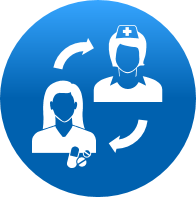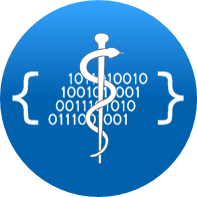Several Health IT solutions will be essential for responding effectively to accountable care and new payment models. In addition to an electronic clinical care record that spans the continuum of care, the following key solutions will enable the core processes of an ACO:
Care Coordination
Collaborative care delivery that optimizes transitions of care, plans and manages hospital discharges to reduce readmissions and reduces network leakage caused by out-of-network referrals.
Discharge Management
Optimizes planning and coordination of care transitions and reduces preventable readmissions:
- Identify high risk patients upon hospital admission
- Notify discharge managers, PCP and family caregivers about hospitalization and ED visits
- Assess a patient’s individual needs for postdischarge care
- Plan post-discharge appointments with PCP, specialists, home care and other providers during hospital stay
- Establish a post-discharge care plan and share it with the entire care team
- Facilitate the transition from hospital to ambulatory care
- Enable PCMH by involving home stay patients to track progress on activities related to discharge tasks
Continuity of a Patient’s Care Record
Continuity-of-care information that is shared in a timely manner among the virtual care team and enables care collaboration across multiple providers is critical to improve care processes of the ACO. Solution capabilities that support such continuity of care and enhanced provider collaboration include:
- Data and workflow integration across disparate applications and care settings
- A unified view of the patient across organizations and care settings.
- Continuous live updates from participating entities and alerts of such updates to ensure timely care synchronization across all accountable parties
- Technology that enables tracking of the patient’s care across all settings for administrative decision making and reimbursement management
- Aggregation of patient information to enable quantitative analysis and care insight on patient populations for the purpose of clinical and financial outcomes management.
Closed Loop Referral Management
By connecting clinicians with the information they need—when, where and how they need it — Referral Management transforms the onerous, bureaucratic, paper-shuffling referral process into a disciplined and effective workflow that:
- Increase patient compliance with recommended care regimens
- Enhance patient care continuity improves information exchange
- Creates a streamlined, patient-centric accountability process for tracking referrals among diverse healthcare entities—from hospitals, HIEs and IDNs to physician practices, pharmacies, external labs and imaging centers
- Ensure that no referrals get lost and that patients receive their treatment in a timely manner by end to end referral status tracking
- Improve workflow efficiency with an automated process that eliminates paperwork, redundant data entry and unnecessary phone calls
- Ensure interoperability with external systems via IHE XDW or by secure e-mail
- Support the patient-centered medical home, where coordinating care providers arrange care with specialists and organize documents ranging from consult reports and operating room notes to discharge summaries
Integration of Care Coordination with HIE also supports to streamline the management of patient flows, keep patients within the network and get insights into referral patterns and trends.
- Reduce referral leakage by offering a comprehensive and up to date directory of provider network membership information which makes it easy for referring providers to find in-network specialists
- Streamline specialist workflow by providing relevant clinical data as attachments to the referral
- Reduce no-shows with automated patient reminders
- Get analytical insights into referral patterns, patient flows and process KPIs to better understand where the money goes
Care Management
Provides proactive, preventive and cost-effective care management for individuals and population cohorts and helps to prevent unwarranted emergency department visits and avoid acute episodes. Disease registries will enable care centers to manage patients with focused care needs, review summary data sets and make necessary interventions when care is not up to standard.
At the core of the solution a rule and workflow engine enables context-aware processes across the continuum, defined by best practice care pathways. Processes that are efficient, predictable and robust enable an organization to thrive in an accountable care environment. Through monitoring process performance, alerting staff to missed steps, sequence issues or delays a continuous improvement of care pathways is supported.
Patient Engagement
In addition to providing high-quality, effective care at the best possible cost, HCOs need to engage patients in staying well and managing their health. A solution that allows patients to communicate with caregivers, perform self-care activities and participate in health risk assessments and screenings, for example, can improve quality of care and outcomes, especially for patients with chronic diseases. Such collaboration will increase over time, and we will extend our patient engagement outreach in a variety of ways, such as:
- providing patients with access to their data so they understand their current health status;
- allowing patients to communicate with their care providers (ask questions, discuss symptoms, renew medications, requests appointments, and so forth);
- enabling patients to enter their own data (ranging from correcting a medication list to entering data about their symptoms, particularly if there‘s been a change in treatment pattern);
- providing patients access to health information and management tools (education, discussion forums with other patients who have conditions similar to theirs, and so forth).
Health Information Exchange (HIE)
A comprehensive solution for integrating patient health information in complex and disparate environments. With standards-based interoperability and a user-friendly interface, it breaks down information silos, fosters clinician and patient adoption, and demonstrates real value to providers and healthcare organizations. Health Information Exchange aggregates clinical information from multiple Electronic Health Records (EHRs) and care settings across organizations, communities or states, and combines it with claims data to provide a comprehensive
longitudinal patient record. When providers and care coordinators have more information at their fingertips, they are able to make better-informed decisions to treat and engage their patients.
Enterprise Wide Master Patient Index (EMPI)
Having the right patient data, at the right place, at the right time is the goal of any HIE. This starts with accurately capturing and coordinating a patient’s identity across multiple disparate organizations. If the information presented at the point of care is matched with the wrong patient, it is not only unusable, it is also dangerous for the patient.






